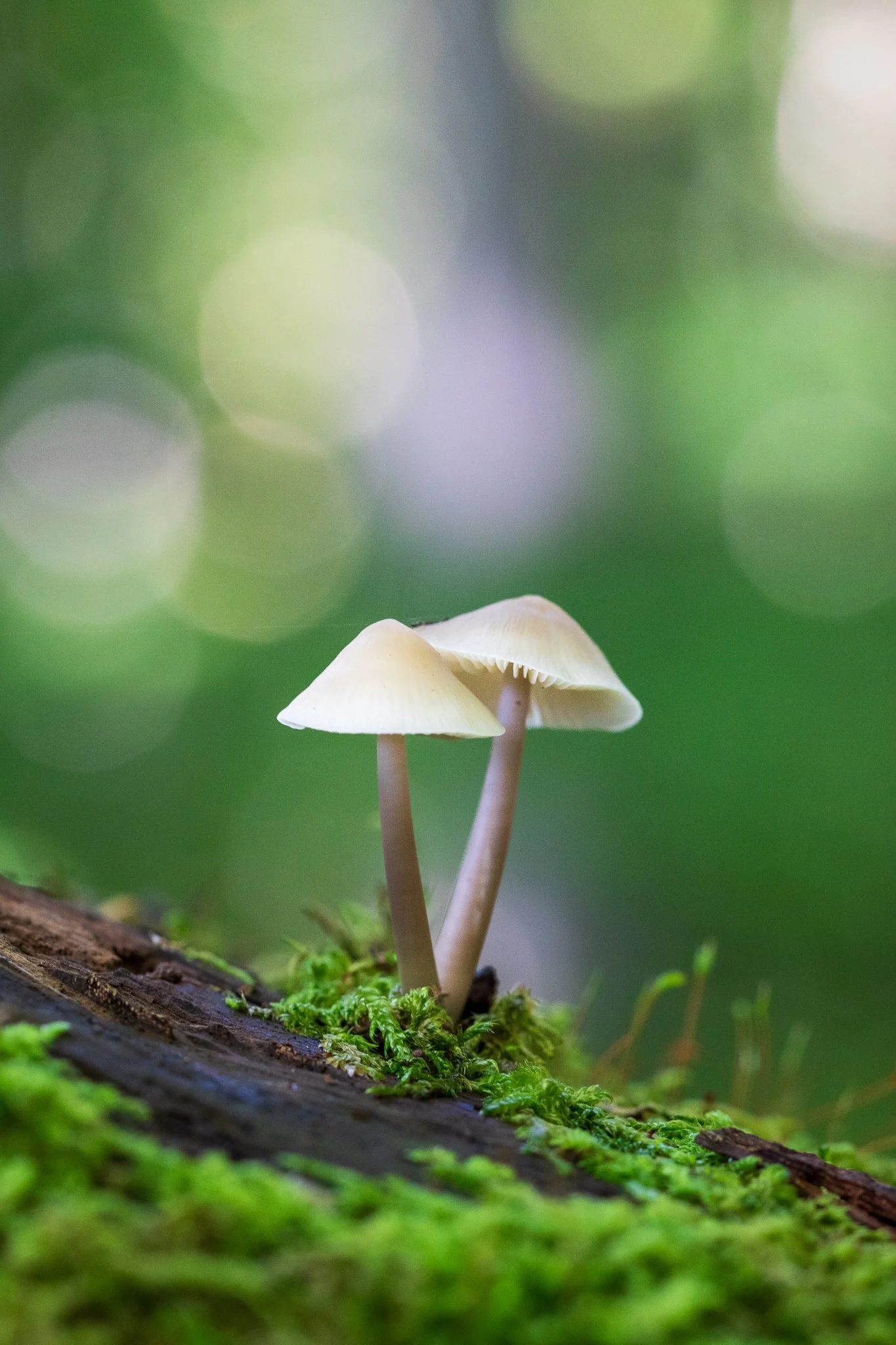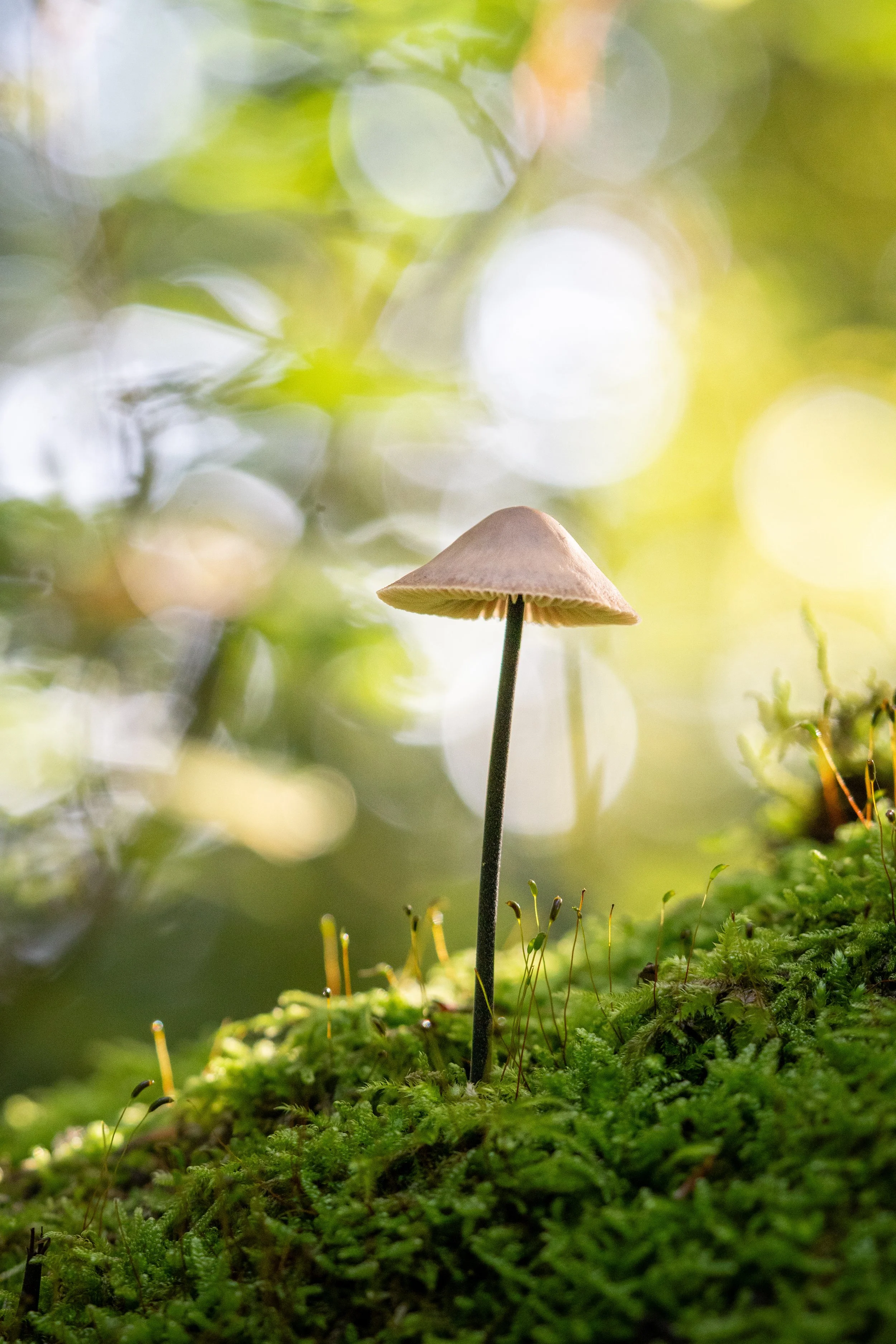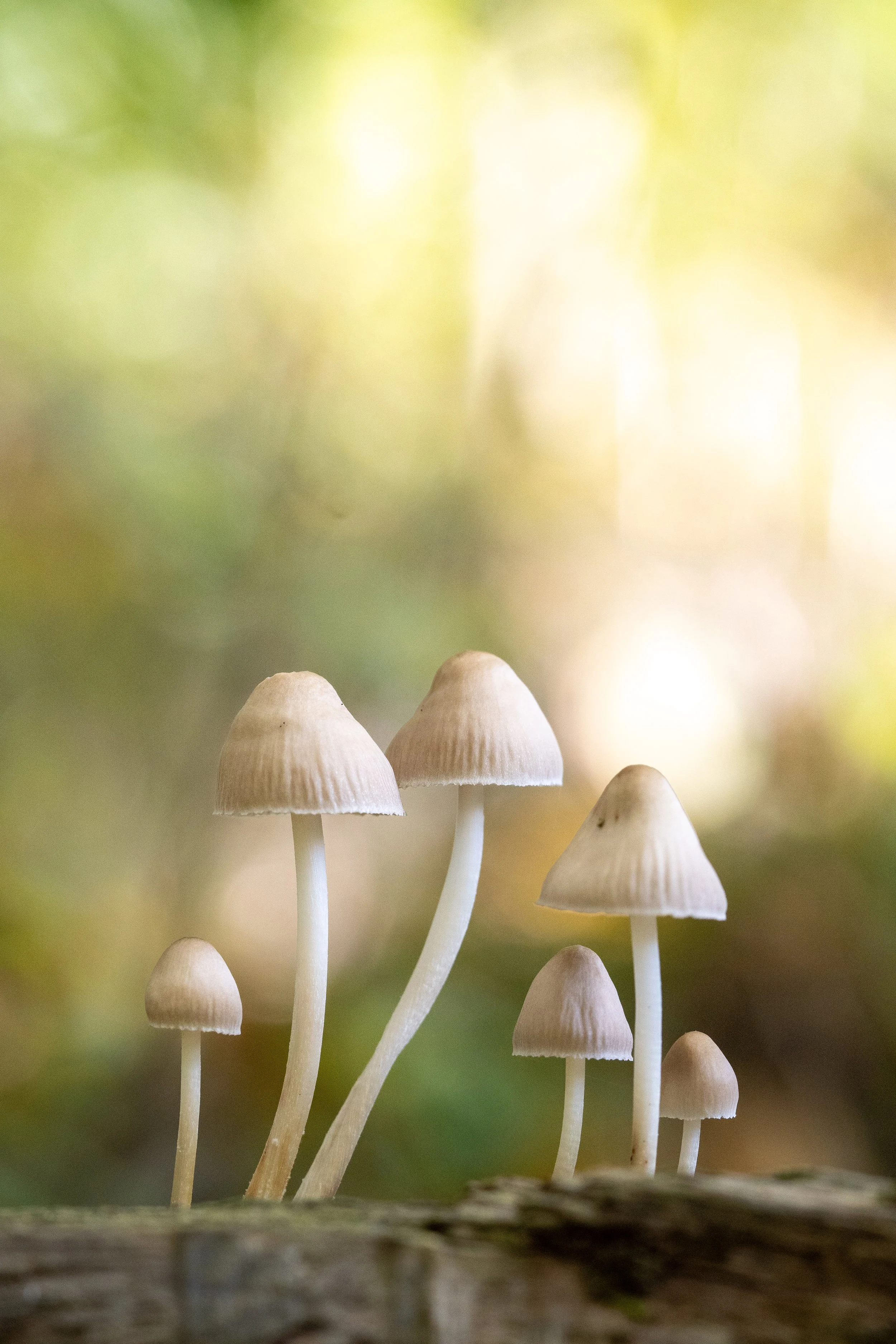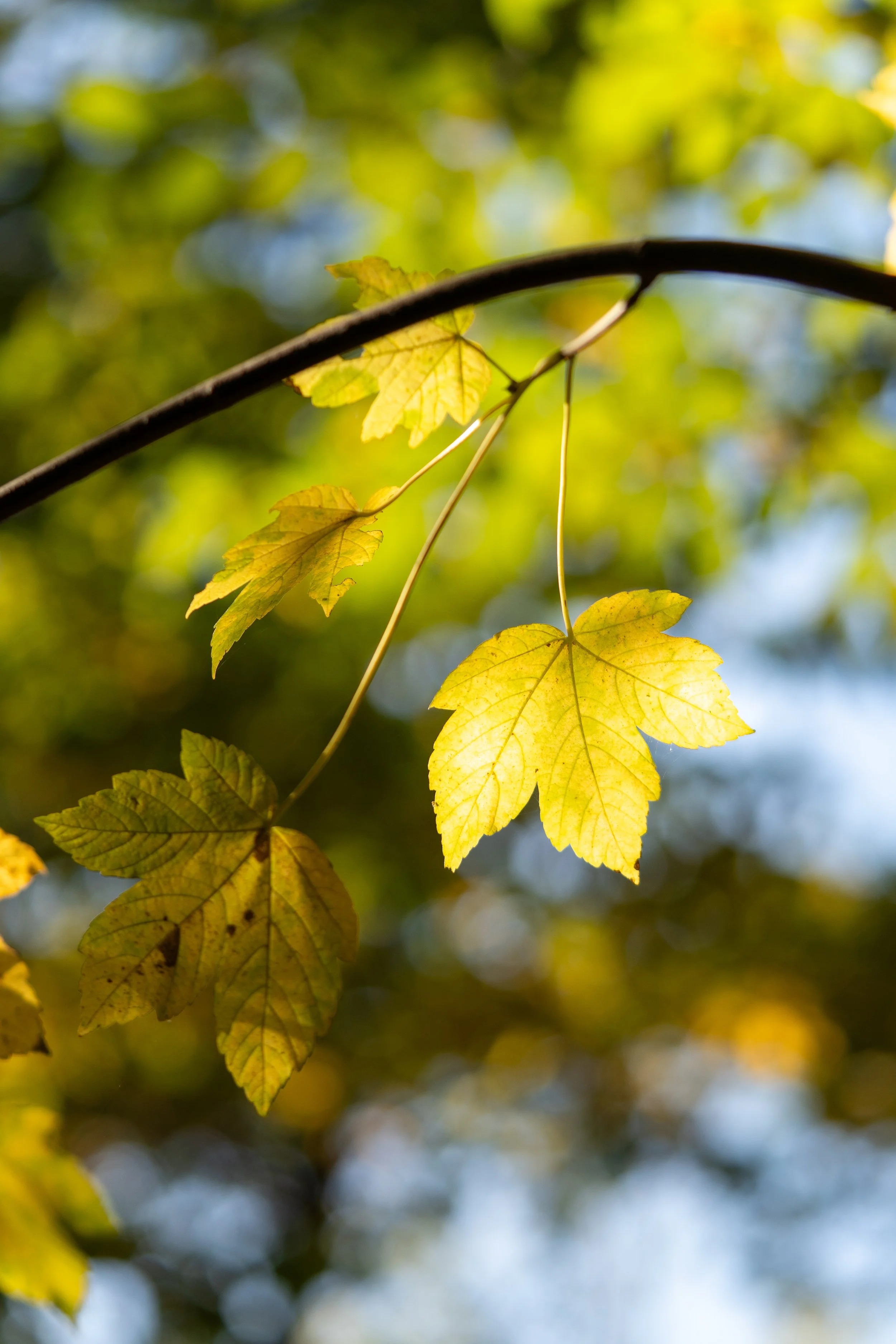Autumn Mushroom Photography
It’s that time of year again: the leaves turn yellow and red, the air cools, and the days grow shorter. Every sunny day with a deep blue sky feels like a true gift — and it’s also the season when mushrooms quietly take over the forest floor. During these cooler days and misty mornings, they emerge in astonishing numbers and varieties, creating mesmerizing scenes.
In this post, I’ll share some of my favorite photos from this autumn’s mushroom hunts, along with a few simple tips for capturing their fleeting beauty.
Get low to the ground
Arguably the single most important aspect of mushroom photography is perspective. Mushrooms are small and grow close to the ground, so shooting from a regular standing position rarely does them justice. The best approach is to kneel down to their level. This not only provides a flattering view of the subject but also helps create a pleasing separation from the background, making the mushroom stand out more.
From this low perspective, the mushrooms seem to rise from the moss like tiny sculptures. The gentle blur of the forest behind them turns a simple woodland scene into something almost otherworldly.
You can really see the impact of perspective in the photo above. Bringing the camera down to the mushrooms’ level emphasizes their form and creates strong separation from the background.
2. Choose an interesting background
The first tip showed how creating subject separation helps the mushroom stand out — the next is to give it a world to live in. In fact, the background is crucial in setting the scene and defining the atmosphere of the image.
Choosing an interesting background can transform a simple mushroom shot into part of a larger story. Subtle shapes, colors, or textures behind your subject can add depth and character, guiding the viewer’s eye through the frame.
A tall, slender mushroom stands among moss, framed by a background of warm forest light and soft out-of-focus leaves — a reminder of how much mood a thoughtful background can create.
You can see how much difference a well-chosen background can make. In the image above, the softly blurred leaves create a tapestry of light and color that frames the mushroom naturally within its forest setting. Those out-of-focus shapes add warmth and depth, turning a simple mushroom portrait into a scene that feels truly alive.
3. Understand light
The forest floor can often be surprisingly dark, even on sunny days. Sometimes, a bit of extra light is all you need to bring out the hidden details. One of the simplest and most cost-effective tools is a piece of aluminum foil — place it on the ground or prop it nearby to gently reflect ambient light back onto your subject.
If you want more control, small LED panels are an excellent alternative. They allow you to adjust the light’s intensity, and many models even let you fine-tune the color temperature or hue to create subtle effects.
The key is moderation: use just enough light to lift the shadows while keeping the overall scene natural. The best lighting should feel unintrusive.
A gentle fill light reveals the fine texture under the mushroom caps while keeping the natural tones of the forest intact.
In the image above, a small LED panel was used to lift the shadows and bring out the delicate texture of the mushrooms without overpowering the natural light. The result still feels true to the forest — soft, balanced, and quietly luminous.
4. Remember the Fundamentals
Even though mushroom photography has its peculiarities, the general principles of photography still apply. Composition, light, and storytelling remain the foundation of a strong image. Avoid placing your subject right in the center — even a small shift in framing can make a scene feel more natural and dynamic. Use light to guide the viewer’s eye, and look for context that adds meaning: a cluster of mushrooms, a fallen leaf, or a beam of soft sunlight can all tell a story beyond the subject itself.
The calm negative space and warm, cohesive tones create a balanced, harmonious composition.
In the image above, the group of mushrooms emerges gracefully from behind the log, their stems forming gentle, sinuous lines that give the composition a natural sense of flow. The generous negative space at the top of the frame adds balance and calm. A soft, cohesive color palette ties everything together, showing how thoughtful composition and harmony in tone can elevate even the simplest forest scene.
5. Bonus Tip: Don’t Forget to Look Up
It’s easy to get fixated on a goal — and mushroom photography is no different. When you’re focused on the forest floor, searching for the next subject, the rest of the world can quietly slip by. But the forest in autumn offers countless moments of beauty beyond what’s underfoot. From time to time, remember to pause, look up, and absorb the colors, shapes, and light around you. Sometimes, the best photo isn’t the one you were searching for.
Golden leaves catching the autumn light — a reminder that sometimes the most interesting subjects aren’t the ones you were actively looking for.
Conclusion
Autumn offers countless chances to slow down and notice the world changing around us. Mushroom photography is one of those quiet practices that teaches patience, observation, and attention to light. Whether you’re lying on the forest floor or simply pausing to watch the sunlight filter through the leaves, the same principles apply — find your perspective, look for balance, and let curiosity guide you.
Next time you head out with your camera, try some of these ideas for yourself. Experiment with angles, notice the light, and see what stories you can find on the forest floor.




